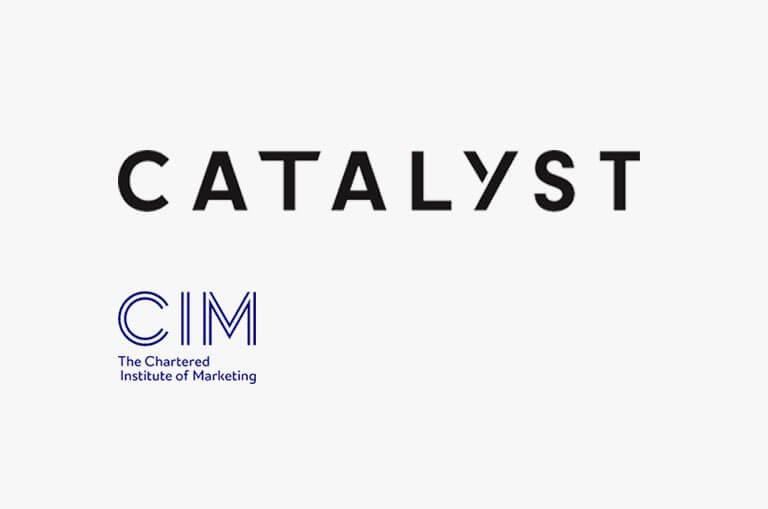Using the Best of China: A Catalyst Magazine Article by Kaitlin Zhang
This article was originally published in the Catalyst Magazineby The Chartered Institute of Marketing in February 2019. Written by Kaitlin Zhang.
China’s ‘nation brand’ value is on the rise, ranking second globally in 2018 with a brand value of $12,779bn, behind America’s value of $25,899bn, according to Brand Finance’s latest Nation Brands report. Germany ranks third and the UK fourth.
Contributing to this is the growing number of exporting Chinese brands, propelled on waves of favourable government initiatives and the nation’s substantial economic power. The sleeping dragon has woken.
The ‘One Belt, One Road’ (OBOR) initiative is President Xi Jinping’s “ambitious effort to improve regional cooperation and connectivity on a trans-continental scale”, according to the World Bank, and includes one-third of world trade and GDP, and more than 60% of the world’s population. BrandZ, the world’s biggest brand equity database, suggests that Chinese brands in traditional sectors such as banking, airlines and oil industries have all already benefited from the initiative.
In 2017, China introduced its first annual ‘Chinese Brands Day’, on 10 May. It acts as a message from the government to Chinese businesses to invest in branding and reverse the negative perceptions of the ‘Made in China’ stereotype.
Technology Dominates
The ‘Made in China 2025’ initiative, a plan launched in 2015 to upgrade the country’s manufacturing capability, has positively impacted digital tech brands. The field of artificial intelligence (AI) is predicted to surpass the US in as little as five years, suggests Alphabet’s technical adviser and former executive chairman, Eric Schmidt. China has five main AI brands: Baidu, Alibaba, Tencent, iFlyTek and SenseTime, the world’s most valuable AI start-up.
The most valuable companies in computer vision, speech recognition, speech synthesis, machine translation and drones are all Chinese companies, says computer scientist and chairman of Beijing-based venture capitalist firm, Sinovation Ventures, Dr Kai-Fu Lee.
Alibaba, Tencent and Huawei lead the charge as technology is poised to overtake banking as Brand Finance’s most valuable sector. Of the top five global Chinese brands in 2018 – Lenovo, Huawei, Alibaba, Xiaomi and Air China – four out of five are technology brands.
In other sectors, fast-growing Chinese brands come from the automotive and spirits sectors, with BYD Auto up 211% and Wuliangye up 161% in the brand rankings. Evergrande, China’s second-largest property developer, has become the world’s most valuable real-estate brand, with its brand value more than doubling in 2018.
For the mobile phone industry, companies like Huawei, Xiaomi, Oppo and Vivo are changing consumer attitudes towards Chinese brands. Huawei is present in over 170 countries and it is ranked the world’s second biggest smartphone vendor, behind Samsung and ahead of Apple.
Despite its soaraway success, Huawei has had some negative PR internationally over security concerns in its 5G telecommunications network equipment, as well as the arrest of chief financial officer Meng Wanzhou in Canada for allegedly violating US sanctions.
This highlights a challenge for Chinese firms to manage their international brand reputation and PR. It is advisable for Chinese firms to start building strong relationships with the international press, and have more open dialogues about privacy and security.
In addition, Chinese firms will need to have a more visible and transparent chief executive or spokesperson who can leverage their personal brands to enhance the corporate one. Note that with Richard Branson for Virgin (or the late Steve Jobs for Apple), it is easier to connect with a smiling human being than a faceless corporation.
Culture Fit
As China looks outwards, foreign, and specifically UK, technology companies are becoming especially attractive to Chinese companies and investors. This is due to the strength of ‘Brand Britain’ and the UK’s status as a world leader in innovation and quality. In 2019, UK brands should look towards the East, as Chinese outbound foreign direct investment has dramatically veered towards Europe over North America.
Considering that China is likely to become the biggest economy in the next five to ten years, marketers from outside its borders can benefit from gaining an advanced understanding of China’s multitudinous and complex markets. They should adopt more localised strategies through niche geographic and demographic segmentation.
A particular segment to pay attention to is the post-1990s generation, which comprises 16% of China’s population today, and will account for more than 20% of total consumption growth in China between now and 2030, higher than any other demographic segment, according to McKinsey.
“Newborn calves are not afraid of tigers,” suggests the Chinese proverb. These young users have a strong desire to gain respect, or gain face (mianzi), by showing their independent thinking though voicing their opinions with international brands on social media.
Therefore consumer engagement and content co-creation on social media can project a positive image for brands. At the same time, engaging with users and forming personal-level ties (guanxi), are highly valued by consumers.
The main challenge for western brands entering China is culture fit. Recent blunders include Burberry’s Chinese New Year campaign, which featured a family portrait that Jing Daily called “creepy”; and Dolce & Gabbana’s advert, showing a Chinese girl struggling to eat spaghetti with chopsticks, which caused Dolce & Gabbana to cancel their Shanghai runway show, following accusations of racism.
Successful companies can avoid mistakes by running local focus groups or testing locally before launching nationwide. Hiring a top agency in London or New York with little China experience is not enough. It’s not easy, because there is a supply gap in the market for bicultural and bilingual marketing practitioners working with the Chinese market.
Success Strategies
One highly successful marketing strategy that is less commonly seen outside China is the use of mobile app gamification to raise brand awareness. Luxury fashion brands like Hermès, Dior and Guerlain have launched successful gaming campaigns on their official WeChat accounts.
For brands, these campaigns mean higher brand engagement and higher conversion rates. Marketers can build sharable social interactions as a part of the game while attending to the social risks of sharing.
China is one of the most mobilecentric societies in the world. Smaller domestic brands are bypassing building websites altogether and launching directly on mobile apps, ecommerce sites or on WeChat official accounts and mini programs. On WeChat, the consumer can discover brands, browse the products, pay through WeChat Pay and tell their friends, without leaving the app.
At the same time, traditional marketing techniques like in-store displays continue to be very relevant because many people still browse offline and buy online. Forward-thinking brands can turn their offline stores into a branded experience that can generate social media buzz.
China is also a pioneer in mobile payment processing. Mainland China, in particular Tier 1 and Tier 2 cities, are predominately cashless and creditcard-less. Even buskers on the street have a QR code to accept instantaneous payment through WeChat pay or Alipay.
This phenomenon, combined with China’s more relaxed privacy laws and advanced facial recognition technology, means that marketers can gather vast amount of data on consumers and analyse their behaviour.
Whether this is a good thing in the long run, for both corporates and consumers, remains to be seen.
For firms with sufficient financial capital, acquisitions and joint ventures can be a good way to bring brand credibility to otherwise unknown or untrusted brands. In the case of Lenovo, the acquisition of an IBM division gave them the right to use IBM’s classic ThinkPad logo for five years, while bringing their own brand in front of consumers.
Now, more and more Chinese people are choosing Chinese brands for idealistic or patriotic reasons. More and more international consumers are buying into the new ‘Brand China’, which is innovative, pioneering and outward-looking.
The world is taking notice.
About Catalyst Magazine
Catalyst is CIM’s member-only magazine for the strategic marketer, bringing business leaders the latest insight and knowledge from across the profession. Catalyst magazine is packed with features that explore new thinking and deliver insightful content across key fields such as leadership, behavioural economics and sociology.
Collating career-enhancing content from a global network of business leaders, Catalyst leads the conversation on the latest topics affecting marketers and businesses alike, making it a truly invaluable learning resource to the modern marketer.





